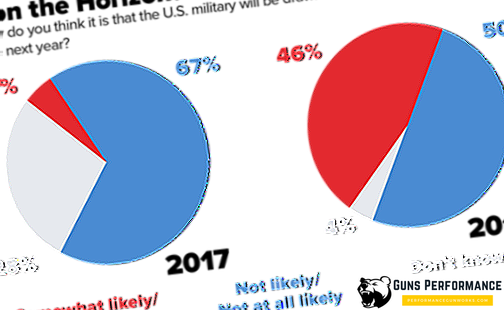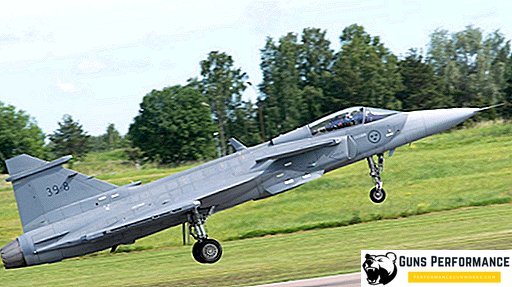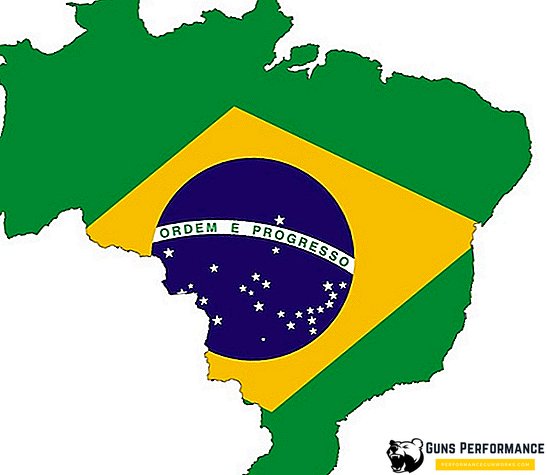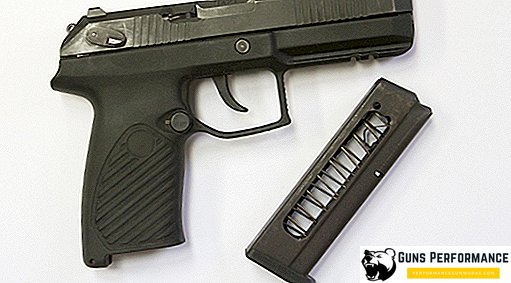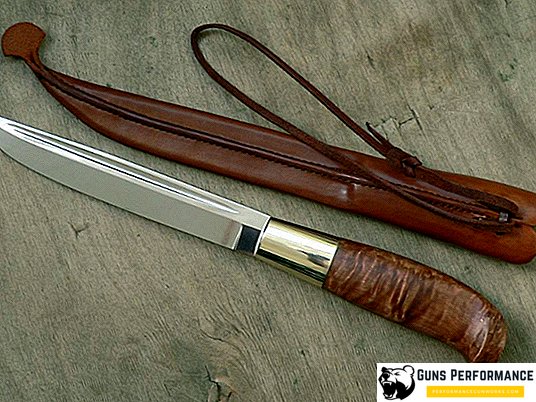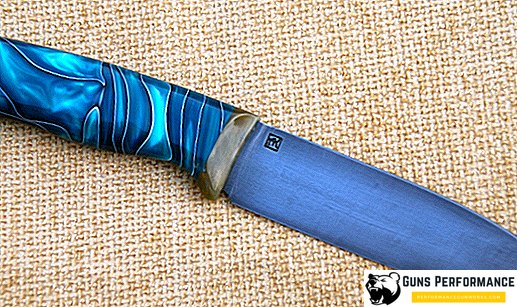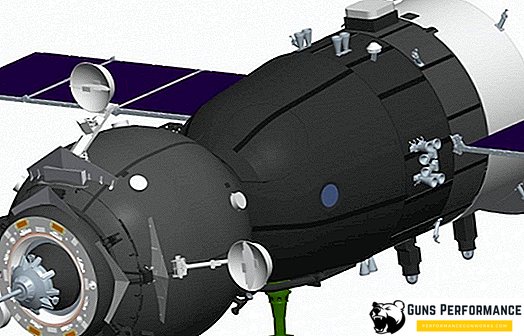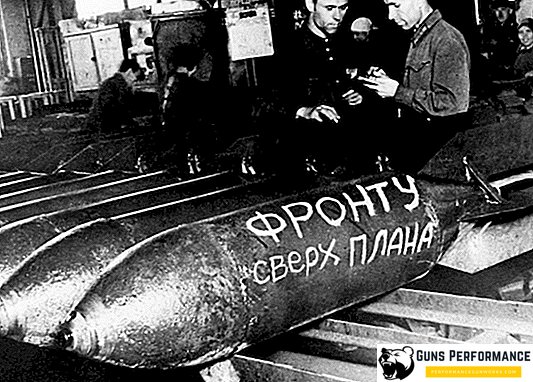
Aircraft bombs or air bombs are one of the main types of aircraft munitions that appeared almost immediately after the inception of combat aircraft. The bomb is dropped from an airplane or other aircraft and reaches the target by gravity.
Currently, aerial bombs have become one of the main means of defeating the enemy, in any armed conflict of the last decades (in which aviation was used, of course) their consumption was tens of thousands of tons.
Modern aerial bombs are used to destroy enemy personnel, armored vehicles, warships, enemy fortifications (including underground bunkers), civilian and military infrastructure. The main striking factors of air bombs are the blast wave, splinters, high temperature. There are special types of bombs that contain various types of toxic agents to destroy enemy personnel.
Since the advent of combat aircraft, a huge number of types of aerial bombs have been developed, some of which are still in use today (for example, high-explosive aerial bombs), while others have long been removed from service and became part of history (rotative-dispersing aerial bomb). Most types of modern bombs were invented before or during the Second World War. However, the current aerial bombs still differ from their predecessors - they have become much smarter and more deadly.

Guided aerial bombs (UAB) - one of the most common types of modern high-precision weapons, they combine the considerable power of the warhead (CU) and the high accuracy of hitting the target. In general, it should be noted that the use of high-precision weapons of destruction is one of the main directions of development of strike aviation, the era of carpet bombing is gradually becoming a thing of the past.
If you ask the ordinary man in the street, what are bombs, then he is unlikely to be able to name more than two or three varieties. In fact, the arsenal of modern bomber aircraft is huge, it includes several dozen different types of ammunition. They differ not only in caliber, the nature of the damaging effect, the weight of the explosive and the purpose. The classification of aerial bombs is quite complex and based on several principles at once, and it differs in different countries.

However, before proceeding to the descriptions of specific types of aerial bombs, a few words should be said about the history of the development of this munition.
Story
The idea of using aircraft in military affairs was born almost immediately after their appearance. In this case, the simplest and most logical way to harm the adversary from the air was to drop something deadly on his head. The first attempts to use airplanes as bombers were undertaken before the outbreak of the First World War — in 1911, during the Italian-Turkish war, the Italians dropped several bombs on Turkish troops.

During World War I, in addition to bombs, they also used metal darts (flashsets), which were more or less effective against enemy personnel.

As the first air bombs often used hand grenades, which the pilot simply threw from his cockpit. It is clear that the accuracy and effectiveness of such a bombing left much to be desired. Even the aircraft of the initial period of the First World War were not very suitable for the role of bombers, airships capable of taking several tons of bombs and traveling 2-4 thousand km were much more effective.

The first full-fledged WWI bomber was the Russian Ilya Muromets aircraft. Soon, such multi-engined bomber aircraft appeared in service with all parties to the conflict. At the same time, work was under way to improve their main means of defeating the enemy - air bombs. The designers were faced with several tasks, the main one of which was the ammunition fuze - it was necessary to ensure that it worked at the right moment. The stability of the first bombs was insufficient - they fell to the ground sideways. The first air bombs were often made of artillery shells of various calibers, but their form was not very suitable for precise bombing, and they were very expensive.

After the creation of the first heavy bombers, the military needed serious caliber ammunition capable of causing really serious damage to the enemy. By the middle of 1915, bombs of 240 caliber and even 400 kg had appeared in service with the Russian army.

At the same time, the first samples of incendiary air bombs based on white phosphorus appear. Russian chemists have managed to develop a cheap way to get this deficient substance.
In 1915, the Germans began to use the first fragmentation bombs, a little later, similar ammunition appeared in service with other countries participating in the conflict. The Russian inventor Dashkevich invented a “barometric” bomb, whose fuse worked at a certain height, scattering a large amount of shrapnel in a certain area.
Summarizing the above, it is possible to come to an unequivocal conclusion: in just a few years of World War I, air bombs and bombers went the unthinkable way - from metal arrows to half-ton bombs of a completely modern form with an effective fuse and stabilization system in flight.
In the period between the world wars, bomber aircraft developed rapidly, the range and payload of the aircraft became longer, and the design of aircraft ammunition was improved. At this time, new types of aerial bombs were developed.
Some of them should be discussed in more detail. In 1939, the Soviet-Finnish war began and almost immediately the USSR aviation began a massive bombardment of Finnish cities. Among other munitions, so-called rotative-dispersing aerial bombs (RRA) were used. It can be called the prototype of the future cluster aerial bombs.

Rota-diverging aerial bomb was a thin-walled container containing a large number of small bombs: high-explosive, fragmentation or incendiary. Due to the special design of the plumage, the rotative-dispersing aerial bomb rotated in flight and scattered submunitions over a large area. Since the USSR assured that the Soviet planes did not bomb the cities of Finland, but threw foodstuffs to starving people, the Finns wittily nicknamed the rotative-scattering bombs "Molotov breadbaskets".
During the Polish campaign, the Germans for the first time used real cluster aerial bombs, which by their construction practically do not differ from the modern ones. They were a thin-walled ammunition, which was undermined at the required height and liberated a large number of small bombs.

The Second World War can be called the first military conflict in which military aircraft played a decisive role. The German attack plane Ju 87 "piece" became the symbol of a new military concept, the blitzkrieg, and the American and British bombers successfully implemented the Douet Doctrine, erasing the German cities and their inhabitants into the rubble.
At the end of the war, the Germans developed and for the first time successfully applied a new type of aviation ammunition - guided aerial bombs. With their help, for example, the flagship of the Italian fleet was sunk - the newest battleship "Roma".

Of the new types of aerial bombs, which were first used during the Second World War, it should be noted anti-tank, as well as jet (or rocket) bombs. Anti-tank bombs are a special type of aviation ammunition designed to combat enemy armored vehicles. They usually had a small caliber and a cumulative warhead. Their example is the Soviet PTAB bombs, which were actively used by the Red Army aircraft against German tanks.
Rocket bombs are a type of aviation munition equipped with a rocket engine, which gave it additional acceleration. The principle of their work was simple: the "penetration" ability of a bomb depends on its mass and height of the discharge. In the USSR, before the war, they considered it necessary to drop a two-ton bomb from a height of four kilometers in order to destroy the battleship guaranteed. However, if you install a simple rocket booster on an ammunition, then both parameters can be reduced several times. To make such an ammunition then it did not work out, but the rocket method of acceleration found use in modern concrete bombs.

On August 6, 1945, a new era of human development began: it became acquainted with a new destructive weapon - a nuclear bomb. This type of aircraft ammunition is still in service with various countries around the world, although the importance of nuclear bombs has decreased significantly.

Combat aviation continuously developed during the Cold War, along with it, aviation bombs were also improved. However, something fundamentally new was not invented in this period. Managed aerial bombs, cluster munitions were improved, bombs with a detonating warhead appeared (vacuum bombs).
Around the mid-70s, bombs are becoming more and more precision weapons. If during the Vietnamese campaign, the UAB accounted for only 1% of the total number of air bombs dropped by American aircraft on the enemy, then during Operation Desert Storm (1990), this figure increased to 8%, and during the bombing of Yugoslavia - to 24 % In 2003, in Iraq, already 70% of American air bombs belonged to high-precision weapons.
Improvement of aviation munitions continues to this day.
Air bombs, their design features and classification
An aerial bomb is a type of ammunition that consists of a body, a stabilizer, equipment, and one or more fuses. Most often the body has an oval-cylindrical shape with a conical tail. Cases of fragmentation, high-explosive and fragmentation-high-explosive aviation bombs (OFAB) are made in such a way that during the explosion to give the maximum number of fragments. In the bottom and fore parts of the body there are usually special glasses for the installation of fuses, some types of bombs have side fuses.

Explosives that are used in aerial bombs are quite different. Most often it is TNT or its alloys with RDX, ammonium nitrate, etc. In the incendiary ammunition, the warhead is filled with incendiary compounds or flammable liquids.
For suspension on the body of the bombs there are special ears, exceptions are ammunition of small caliber, which are placed in the cassettes or bundles.
The stabilizer is designed to ensure a stable flight of the munition, a confident triggering of the fuse and more effective destruction of the target. Stabilizers of modern bombs can have a complex structure: box-shaped, pinnate or cylindrical. Aerial bombs that are used from low altitudes often have umbrella stabilizers that open immediately after a drop. Their task is to slow down the flight of the ammunition, to allow the aircraft to move a safe distance from the point of explosion.
Modern aerial bombs are equipped with different types of fuses: shock, non-contact, remote, etc.

If we talk about the classification of aerial bombs, then there are several. All bombs are divided into:
- the main ones;
- auxiliary.
Basic aerial bombs are designed for direct destruction of various targets.
Auxiliary help to solve a combat task, or they are used in the training of troops. These include lighting, smoke, campaigning, signaling, land-based, training and imitation.

The main aerial bombs can be divided according to the type of damaging effects they cause:
- Ordinary. These include ammunition stuffed with conventional explosives or incendiary substances. Target hitting occurs due to the blast wave, fragments, high temperature.
- Chemical. This category of aviation bombs include ammunition filled with chemical poisonous substances. Chemical bombs have never been used on a large scale.
- Bacteriological. They are loaded with biological pathogens of various diseases or their carriers and also never used on a large scale.
- Nuclear They have a nuclear or thermonuclear warhead, defeat occurs due to a shock wave, light radiation, radiation, and an electromagnetic wave.

There is a classification of aerial bombs, based on a narrower definition of the damaging effect, it is used most often. According to her, bombs are:
- high explosive;
- high-explosive fragmentation;
- fragmentation;
- high-explosive penetrants (have a thick body);
- concrete;
- armor piercing;
- incendiary;
- high explosive incendiary;
- poisonous;
- detonating space;
- fragmentation-poisoning.
This list goes on.

The main characteristics of bombs include: caliber, performance indicators, filling ratio, characteristic time and range of combat use conditions.

One of the main characteristics of any bombs is its caliber. This is the mass of ammunition in kilograms. Rather conditionally, bombs are divided into small, medium and large caliber ammunition. To which group a particular bomb belongs belongs in many respects depending on its type. So, for example, a hundred kilogram high explosive bomb refers to a small caliber, and its fragmentation or incendiary analogue - to the medium.

The fill ratio is the ratio of the mass of the explosive of a bomb to its total weight. For thin-walled high-explosive ammunition, it is higher (approximately 0.7), and for thick-walled, fragmentation and concrete bombs, it is lower (approximately 0.1-0.2).
Characteristic time is a parameter that is associated with the ballistic properties of a bomb. This is the time of its fall when dropped from an aircraft flying horizontally at a speed of 40 m / s, from a height of 2 thousand meters.
Expected efficiency is also quite conditional parameter of aerial bombs. It differs for different types of these ammunition. The assessment may be related to the size of the crater, the number of fires, the thickness of the pierced armor, the area of the affected area, etc.

The range of combat use conditions shows the characteristics on which bombing is possible: maximum and minimum speed, altitude.
Types of aerial bombs
The most commonly used aircraft bombs are high-explosive. Even a small 50-kg bomb contains more explosives than a 210-mm gun shell. The reason is very simple - the bomb does not need to withstand the enormous loads that a projectile is subjected to in the gun barrel, so it can be made thin-walled. The body of the projectile requires precise and complex processing, which is absolutely not necessary for an aerial bomb. Accordingly, the cost of the latter is much lower.

It should be noted that the use of high-explosive bombs of very large calibers (above 1 thousand kg) is not always rational. With an increase in the mass of the explosive, the damage radius does not grow much. Therefore, over a large area it is much more efficient to use several ammunition of medium power.
Another common type of aerial bombs are fragmentation bombs. The main purpose of the destruction of such bombs is the living force of the enemy or the civilian population. These munitions have a design that contributes to the formation of a large number of fragments after the explosion. Usually they have a notch on the inside of the case or ready-made striking elements (most often balls or needles) placed inside the case. With the explosion of a hundred kilogram fragmentation bomb, 5-6 thousand small fragments are obtained.
As a rule, fragmentation bombs have a smaller caliber than high-explosive. A significant disadvantage of this type of ammunition is the fact that it is easy to hide from a fragmentation bomb. Any field reinforcement (trench, cell) or building will do for this. Currently, cluster fragmentation ammunition, which is a container filled with small fragmentation submunitions, is more common.

Such bombs cause significant casualties, with the civilian population suffering the most from their actions. Therefore, such weapons are prohibited by many conventions.
Concrete bombs. This is a very interesting type of ammunition, its predecessor are the so-called seismic bombs, developed by the British at the beginning of World War II. The idea was this: to make a very large bomb (5.4 tons - Tallboy and 10 tons - Grand Slam), raise it higher - eight kilometers - and throw it on the adversary's head. The bomb, speeding up to great speed, penetrates deep into the ground and explodes there. As a result, a small earthquake occurs, which destroys buildings in a large area.
Nothing came of this idea. Подземный взрыв, конечно же, сотрясал почву, но явно недостаточно для обрушения зданий. Зато подземные сооружения он уничтожал очень эффективно. Поэтому уже в конце войны английская авиация подобные бомбы использовала специально для уничтожения бункеров.
Сегодня бетонобойные бомбы часто оснащают ракетным ускорителем, чтобы боеприпас набрал большую скорость и проник поглубже в землю.

Вакуумные бомбы. Эти авиационные боеприпасы стали одним из немногих послевоенных изобретений, хотя боеприпасами объемного взрыва интересовались еще немцы в конце Второй мировой войны. Массово использовать их начали американцы во время вьетнамской кампании.
Принцип работы авиационных боеприпасов объемного взрыва - это более правильное название - довольно прост. В боевой части бомбы содержится вещество, которое при детонации подрывается специальным зарядом и превращается в аэрозоль, после чего второй заряд поджигает его. Подобный взрыв в несколько раз мощнее обычного и вот почему: обычный тротил (или другое ВВ) содержит и взрывчатое вещество, и окислитель, "вакуумная" бомба использует для окисления (горения) кислород воздуха.

Правда, взрыв подобного типа относится к типу "горение", но по своему действию она во многом превосходит обычные боеприпасы.


